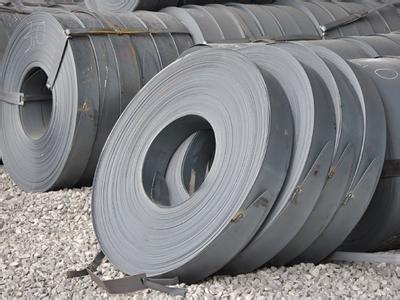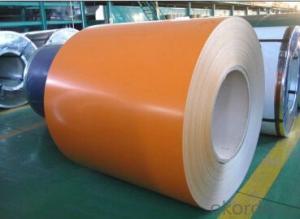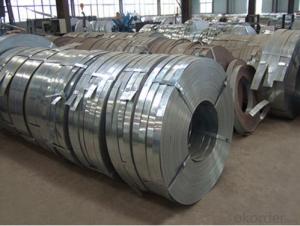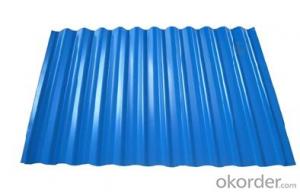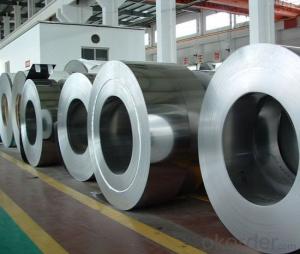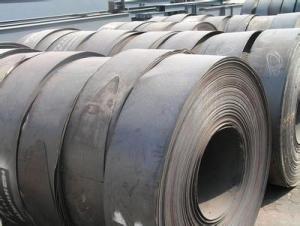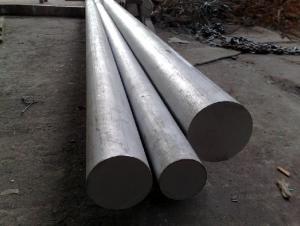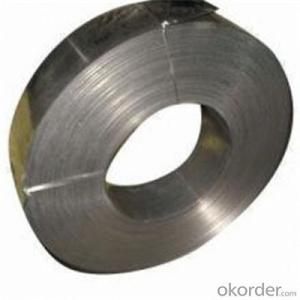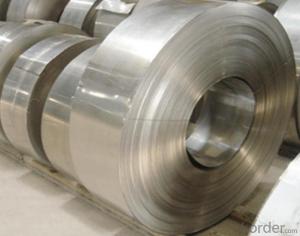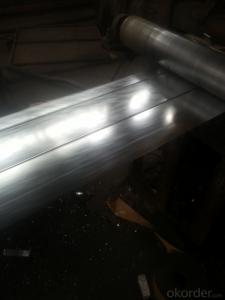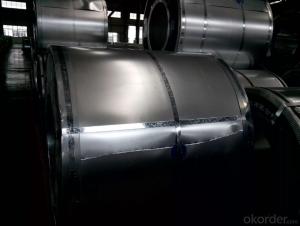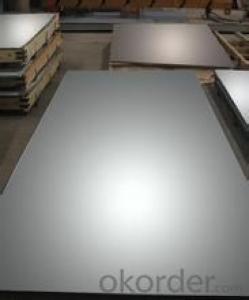High grade hot- rolled strip
- Loading Port:
- China Main Port
- Payment Terms:
- TT OR LC
- Min Order Qty:
- -
- Supply Capability:
- -
OKorder Service Pledge
OKorder Financial Service
You Might Also Like
Hot rolled strip, the English name of Hot - rolled strip, also known as Hot rolled steel belt, commonly known as is a Hot plate. Hot rolled strip width less than or equal to 600 mm, the thickness of 0.35-200 - mm steel plate and the thickness of 1.2-25 mm steel belt.
The relevant classification
The editor
Hot rolled steel plate is divided into structural steel, mild steel, welding steel, then according to the steel of various steel products to find what you need to check the specific density and composition of the steel. Hot rolled steel plate hardness is low, easy processing, good extensibility. Hot rolled strip steel products including steel belt (volume) and has its shear of steel plate. Steel belt (volume) can be divided into straight hair volume and finishing (volume classification, formation and slitting roll).
Hot rolled steel plate strength is relatively low, the surface quality almost (oxidation, low roughness), but the plasticity is good, generally for the medium plate, manufacture, high strength, high hardness, high surface finish, generally for sheet, can be used as a drawing board.
2 the difference between
The editor
Cold rolled steel sheet due to a certain degree of strain hardening, toughness is low, but can reach better showed, used for cold bending spring pieces and parts, at the same time due to the yield point is close to the tensile strength, so no foresight to danger, in use process in the load exceeds allowable load are prone to accidents.
1) cold plate using cold processing surface without scale, good quality. Hot rolled steel plate, surface of oxide skin are processed using the hot rolled plate thickness with the poor.
2) hot rolled steel toughness and surface smoothness is poor, the price is low, and the extension of manufacture and resilient, but the price is more expensive.
3) rolling is divided into cold rolled and hot rolled steel plate, distinguish between point for recrystallization temperature.
4) cold rolling: generally used in the production of strip cold rolling, the rolling speed is higher. The temperature of the hot rolled steel plate, the temperature of the hot rolled and forged close.
5) don't plating surface of hot rolled steel plate into dark brown, not plated cold plate surface is gray, from the smooth degree of surface after plating will distinguish, lengzha board smoothness is higher than that of hot rolled steel plate.
Data reference
标准及牌号 | 国家标准 | 相当国外标准 | 作用与用途 | ||
材料类别 | 执行标准 | 牌号 | 标准号 | 牌号 | 适应于制造冷成型加工的零件 |
低碳钢卷板 | Q/BQB302 | SPHC | JISG3131 | SPHC | |
SPHD | SPHD | ||||
SPHE | SPHE | ||||
SAE1006/SAE1008 | SAE1006/SAE1008 | ||||
XG180IF/200IF | XG180IF/200IF | ||||
一般结构用钢 | GB/T912-1989 | Q195 | JISG3101 | SS330 | 用于建筑、桥梁、船舶、车辆等一般构建 |
Q235B | SS400 | ||||
SS400 | SS490 | ||||
ASTMA36 | SS540 |
- Q: What are the factors to consider when selecting steel strips for a specific application?
- When selecting steel strips for a specific application, there are several factors that need to be considered in order to ensure optimal performance and durability. 1. Material Composition: The first factor to consider is the material composition of the steel strips. Different alloys and grades of steel offer varying levels of strength, corrosion resistance, and heat resistance. It is important to choose a material that is suitable for the specific application and can withstand the intended environmental conditions. 2. Thickness and Width: The thickness and width of the steel strips should be selected based on the desired strength and stability required for the application. Thicker strips generally offer higher strength, while wider strips provide increased stability and load-bearing capacity. 3. Surface Finish: The surface finish of the steel strips is crucial, as it affects their ability to withstand wear, corrosion, and other forms of damage. Different finishes, such as hot-rolled, cold-rolled, or galvanized, offer varying levels of protection and aesthetic appeal. The appropriate surface finish should be selected based on the specific application requirements. 4. Tensile Strength and Yield Strength: Tensile strength refers to the maximum amount of stress a material can withstand before it breaks, while yield strength is the stress level at which permanent deformation occurs. These mechanical properties are critical for determining the suitability of steel strips in applications that involve high loads or impacts. The desired tensile and yield strength should be determined based on the specific application requirements. 5. Ductility and Toughness: Ductility and toughness are important considerations when selecting steel strips for applications that involve bending, forming, or impact resistance. Ductility refers to the ability of a material to stretch without breaking, while toughness is its ability to absorb energy before fracturing. Both properties are crucial for applications that require flexibility and resistance to cracking or fracture. 6. Cost and Availability: Cost and availability are practical factors that need to be considered when selecting steel strips. It is important to evaluate the overall cost of the material, including procurement, transportation, and processing. Additionally, the availability of the specific steel strips required for the application should be considered to ensure timely delivery and avoid production delays. In conclusion, selecting steel strips for a specific application requires careful consideration of various factors, including material composition, thickness and width, surface finish, tensile and yield strength, ductility and toughness, as well as cost and availability. By evaluating these factors in relation to the specific application requirements, one can make an informed decision and choose the most suitable steel strips for optimal performance and durability.
- Q: What are the factors that affect the corrosion resistance of steel strips?
- There are several factors that can affect the corrosion resistance of steel strips. 1. Composition: The composition of the steel, including the presence of alloying elements such as chromium, nickel, and molybdenum, can greatly influence its corrosion resistance. These elements can form a protective oxide layer on the surface of the steel, preventing further corrosion. 2. Surface condition: The surface condition of the steel, including any surface defects or impurities, can impact its corrosion resistance. A smooth and clean surface is less prone to corrosion than a rough or contaminated surface. 3. Environmental exposure: The type and severity of the environment in which the steel is exposed can affect its corrosion resistance. Factors such as humidity, temperature, presence of corrosive chemicals or gases, and the level of oxygen exposure can all contribute to corrosion. 4. pH level: The pH level of the environment can have a significant impact on the corrosion resistance of steel. In acidic environments, steel is more prone to corrosion, while in alkaline environments, it tends to be more resistant. 5. Coatings and treatments: Applying protective coatings or treatments to the surface of the steel can enhance its corrosion resistance. Examples include galvanizing, painting, or applying corrosion inhibitors. 6. Mechanical stress: The presence of mechanical stress, such as bending, stretching, or abrasion, can affect the corrosion resistance of steel. Stress can disrupt the protective oxide layer, making the steel more vulnerable to corrosion. 7. Microstructure: The microstructure of the steel, including grain size and the presence of impurities or defects, can impact its corrosion resistance. A homogeneous and fine-grained microstructure is generally more resistant to corrosion. Considering these factors and implementing appropriate measures to address them can help improve the corrosion resistance of steel strips and extend their lifespan in various applications.
- Q: How are steel strips used in the production of blades?
- Steel strips are used in the production of blades as they provide a strong and durable material that can be easily shaped and hardened. These strips are often cut, shaped, and then heat-treated to create the desired blade shape and hardness. The steel's strength and flexibility make it ideal for producing sharp and long-lasting blades, used in various applications such as knives, saws, or industrial cutting tools.
- Q: What are the common surface finishes for carbon steel strips?
- There are several common surface finishes for carbon steel strips, each serving a specific purpose and application. Some of the most common surface finishes include: 1. Hot Rolled: This is the most basic surface finish for carbon steel strips, achieved by heating the steel above its recrystallization temperature and then cooling it. It results in a rough, scale-covered surface. 2. Cold Rolled: This surface finish is achieved by rolling the steel at room temperature, resulting in a smooth, polished surface. It is commonly used for applications where aesthetics and surface quality are important. 3. Pickled and Oiled: This surface finish involves immersing the steel strip in an acid solution to remove mill scale and other impurities. It is then oiled to prevent rusting. Pickled and oiled carbon steel strips are commonly used in applications where corrosion resistance is important. 4. Galvanized: In this surface finish, the carbon steel strip is coated with a layer of zinc to protect it from corrosion. The zinc coating provides a barrier against moisture and other environmental factors. Galvanized carbon steel strips are widely used in outdoor applications or in environments where corrosion is a concern. 5. Electroplated: This surface finish involves applying a thin layer of metal, such as zinc or chromium, onto the carbon steel strip through an electrochemical process. Electroplating provides improved corrosion resistance, enhanced aesthetic appearance, and increased durability. 6. Powder Coated: In this surface finish, a fine powder is applied to the carbon steel strip and then heated to form a protective layer. Powder coating provides excellent resistance to chipping, scratching, and fading, making it suitable for applications that require long-lasting durability and a decorative finish. 7. Passivated: Passivation is a chemical treatment applied to carbon steel strips to remove surface contaminants and improve corrosion resistance. This surface finish is commonly used in applications where the carbon steel strip will be exposed to harsh environments or corrosive substances. These are just a few examples of the common surface finishes for carbon steel strips. The selection of the appropriate finish depends on various factors, such as the intended application, environmental conditions, aesthetic requirements, and the desired level of corrosion resistance.
- Q: Can steel strips be used in electrical or electronic applications?
- Yes, steel strips can be used in electrical or electronic applications, particularly for grounding purposes or as a structural component in certain devices or equipment. However, their usage is limited compared to other materials like copper or aluminum, which are more commonly used for conducting electricity due to their superior electrical conductivity.
- Q: How are steel strips processed for improved surface finish?
- Steel strips are processed for improved surface finish through various techniques such as pickling, cold rolling, annealing, and skin passing. Pickling involves removing scale and impurities from the steel surface using acid baths. Cold rolling reduces the thickness and improves the surface smoothness through multiple passes between rollers. Annealing is a heat treatment process that eliminates internal stresses and enhances the surface quality. Skin passing further improves the surface finish by applying light pressure and tension to the steel strip. These processes collectively contribute to achieving a desired surface finish for steel strips.
- Q: How is the tensile strength of steel strips determined?
- The tensile strength of steel strips is determined through a test called the tensile test or tensile strength test. This test involves stretching a steel strip until it reaches its breaking point. During the test, a sample strip is subjected to an increasing amount of tension until it fractures. The applied force and the corresponding elongation of the strip are measured, and the tensile strength is calculated by dividing the maximum force applied before breaking by the original cross-sectional area of the strip. This test helps to determine the maximum amount of stress that the steel strip can withstand without breaking, providing crucial information about its mechanical properties and suitability for various applications.
- Q: What are the main factors affecting the galvanization of steel strips?
- The main factors affecting the galvanization of steel strips include the quality and composition of the steel, the cleanliness of the surface, the temperature and duration of the galvanizing process, and the presence of any impurities or contaminants.
- Q: Can steel strips be used in roofing or cladding applications?
- Yes, steel strips can be used in roofing or cladding applications. Steel strips are commonly used in these applications due to their durability, strength, and resistance to corrosion. They provide a reliable and long-lasting solution for protecting buildings from weather elements and enhancing their aesthetic appearance.
- Q: What are the different surface roughening techniques for steel strips?
- Some common surface roughening techniques for steel strips include shot blasting, acid etching, and mechanical brushing.
Send your message to us
High grade hot- rolled strip
- Loading Port:
- China Main Port
- Payment Terms:
- TT OR LC
- Min Order Qty:
- -
- Supply Capability:
- -
OKorder Service Pledge
OKorder Financial Service
Similar products
Hot products
Hot Searches
Related keywords





